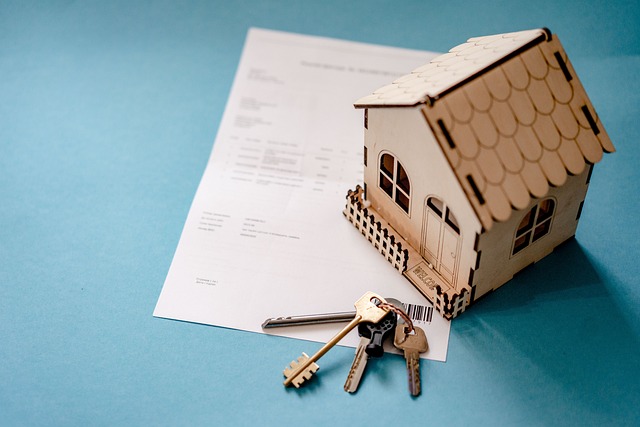Property insurance is a financial safety net against losses due to property damage or theft, covering hazards like fire, theft, vandalism, and natural disasters. However, certain events like war, earthquakes (in some cases), and willful acts are excluded. Tailoring policies to specific needs, understanding exclusions, and following a step-by-step claims process are crucial for effective risk management and recovery. Common mistakes include neglecting policy reading and underestimating property value. Property insurance offers peace of mind, as seen in real-life scenarios where it covered extensive damage and fire losses, enabling individuals and businesses to recover and continue their lives.
“Protecting your property is paramount, and Property Insurance stands as a robust shield against unforeseen circumstances. This comprehensive guide delves into the intricacies of property insurance, shedding light on what it entails and the various types of losses it covers.
From natural disasters to accidents, we explore the spectrum of potential risks. Learn how to select tailored policies that meet your unique needs and understand the step-by-step claims process. Additionally, discover common pitfalls to avoid during this crucial time.
Get ready to transform your knowledge of property insurance and be prepared for life’s unexpected twists.”
Understanding Property Insurance: What It Covers and Exclusions

Property insurance is a safety net that protects individuals and businesses from financial loss in case their property sustains damage or is stolen. It’s designed to cover a wide range of potential hazards, including fire, theft, vandalism, natural disasters like floods and earthquakes, and even lightning strikes. The scope of coverage varies depending on the type of policy, but generally, it includes structures (homes, buildings), personal belongings, and liability for any injuries or damages caused to others on the insured property.
However, not all events are covered under standard property insurance policies. Exclusions are specific circumstances or perils that are not insured against. These can include damage caused by war, nuclear hazards, earthquakes in some cases, and willful acts (damaging property on purpose). It’s crucial to read the policy document carefully to understand what’s covered and what isn’t, ensuring you’re adequately protected against potential risks.
Types of Property Loss: Natural Disasters, Accidents, and More

Property loss can stem from a variety of sources, each requiring tailored coverage to ensure adequate protection for individuals and businesses alike. One of the most common types is natural disasters, encompassing events like floods, hurricanes, earthquakes, and wildfires. These unpredictable forces often lead to substantial property damage, making comprehensive property insurance essential for those living or operating in vulnerable areas.
Beyond natural occurrences, accidents also pose significant risks. This includes incidents such as structural failures, plumbing leaks, electrical malfunctions, and even human error. Whether it’s a burst pipe causing water damage or an accidental fire, these unforeseen circumstances can result in substantial financial losses. Accidental damage coverage is integral to any robust property insurance policy, offering peace of mind and financial safeguard against unexpected events.
How to Choose the Right Property Insurance Policy for Your Needs

When selecting a property insurance policy, it’s crucial to evaluate your specific needs and preferences. Start by understanding the different types of coverage available, such as all-risk or named perils policies, and assess what risks are most relevant to your property. Consider factors like location, age, and value of your property, as well as any high-value items or structures on the premises. Researching and comparing various insurance providers and their offerings is essential. Look for companies that provide comprehensive coverage options tailored to meet your requirements.
Read the policy documents carefully, paying attention to exclusions, deductibles, and limitations. Ensure you’re clear on what’s covered and what isn’t, and understand the conditions under which claims will be settled. Don’t hesitate to ask questions or seek clarification from insurance agents. Making an informed decision can help safeguard your investment and provide peace of mind in case of unexpected property loss.
The Claims Process: Step-by-Step Guide to Filing a Claim

When facing property loss, navigating the claims process can seem daunting. However, understanding the steps involved in filing a claim with your property insurance provider can help streamline the recovery process. Here’s a step-by-step guide to ensure you’re prepared:
1. Assess the Damage: The first step is to thoroughly inspect and document the damage to your property. Take photos or videos of the affected areas, noting any visible damage or items that require replacement. Keep detailed records of all expenses related to the loss, including repair estimates or receipts for temporary housing if needed.
2. Notify Your Insurance Provider: Contact your insurance company as soon as possible after discovering the loss. Most providers have a dedicated customer service team available 24/7. Be prepared to provide policy details, personal information, and a summary of the incident. They will guide you through the next steps and assign a claims adjuster to review your case.
3. File Your Claim: Fill out the claim form provided by your insurance company accurately and completely. This may be done online or over the phone, depending on their preferred method. Be sure to include all relevant information, including details about the property loss, estimated repair costs, and any supporting documents like police reports or repair estimates.
4. Cooperate with the Adjuster: Your claims adjuster will need to inspect the damage and assess the value of your claim. Cooperate fully by scheduling appointments, providing access to your property, and answering any questions regarding your policy or the loss. They will help determine the scope of work required for repairs and provide an estimate for coverage based on your policy terms.
5. Review Your Claim: Once your claim is processed, review the decision made by your insurance company. Ensure that the amount offered covers all eligible expenses according to your policy. If you disagree with the decision, understand your rights and options for further appeal or negotiation.
Common Mistakes to Avoid When Dealing with Property Loss Insurance

When dealing with property loss insurance, there are several common mistakes that policyholders often make. One of the biggest blunders is neglecting to thoroughly read and understand their insurance policy. Property insurance can be complex, with various exclusions and limitations, so it’s crucial to know what’s covered and what isn’t. Failing to review the policy document could lead to unexpected gaps in coverage during a claim process.
Another mistake is waiting until after a loss occurs to think about insurance. It’s essential to have property insurance in place before any damage or theft happens. Additionally, many individuals underestimate the value of their belongings. Overlooking the actual cash value of your property, contents, and valuables can result in an inadequate settlement. Always ensure you’re insured for enough, as underestimating could leave you financially vulnerable during recovery.
Case Studies: Real-Life Examples of Property Loss Coverage in Action

In a world where unforeseen events can strike at any moment, property insurance stands as a beacon of protection for homeowners and businesses alike. To understand its true value, let’s explore some real-life scenarios where comprehensive property loss coverage has made all the difference.
Imagine a severe storm ravaging a neighborhood, leaving behind damaged roofs, shattered windows, and flooded basements. For one fortunate family, their property insurance policy stepped in to cover the cost of repairs, ensuring they could rebuild and regain their sense of security. Similarly, a business owner whose store suffered a fire, leading to significant inventory loss, found solace in their insurance coverage, which compensated them for rebuilding and restocking, helping their establishment survive and thrive once more. These case studies illustrate how property insurance provides financial peace of mind, enabling individuals and businesses to recover from unforeseen disasters and continue with their lives.
